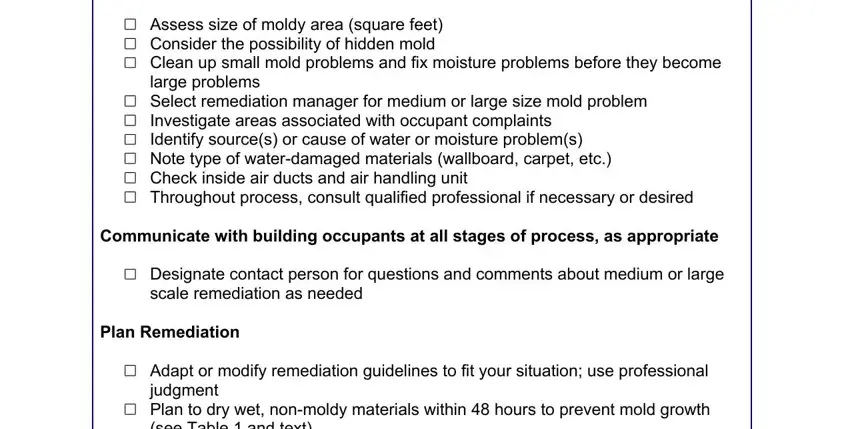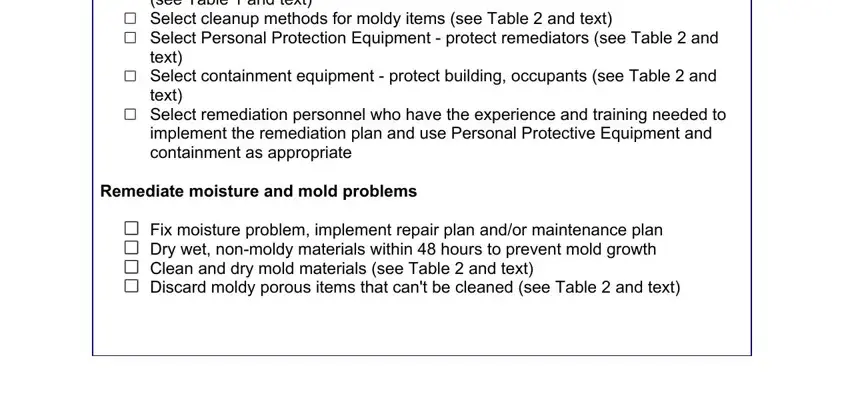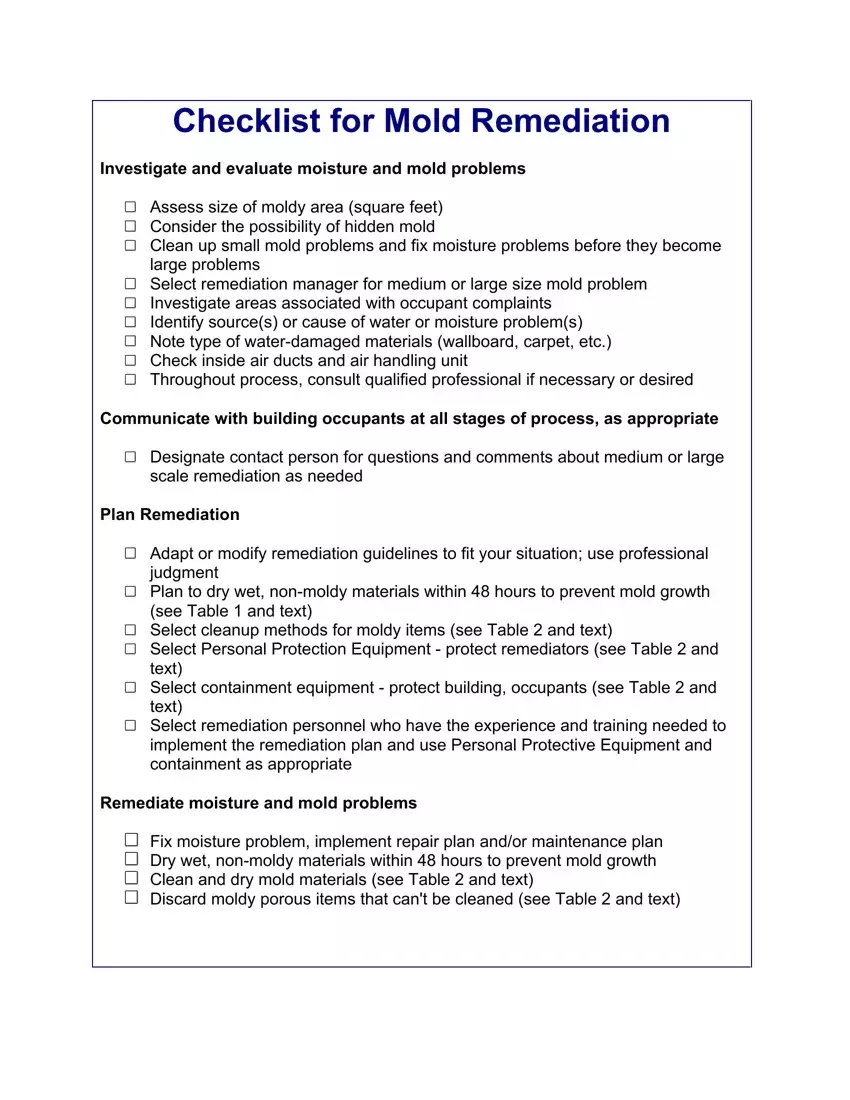Checklist for Mold Remediation
Investigate and evaluate moisture and mold problems
Assess size of moldy area (square feet) Consider the possibility of hidden mold
Clean up small mold problems and fix moisture problems before they become large problems
Select remediation manager for medium or large size mold problem Investigate areas associated with occupant complaints
Identify source(s) or cause of water or moisture problem(s) Note type of water-damaged materials (wallboard, carpet, etc.) Check inside air ducts and air handling unit
Throughout process, consult qualified professional if necessary or desired
Communicate with building occupants at all stages of process, as appropriate
Designate contact person for questions and comments about medium or large scale remediation as needed
Plan Remediation
Adapt or modify remediation guidelines to fit your situation; use professional judgment
Plan to dry wet, non-moldy materials within 48 hours to prevent mold growth (see Table 1 and text)
Select cleanup methods for moldy items (see Table 2 and text)
Select Personal Protection Equipment - protect remediators (see Table 2 and text)
Select containment equipment - protect building, occupants (see Table 2 and text)
Select remediation personnel who have the experience and training needed to implement the remediation plan and use Personal Protective Equipment and containment as appropriate
Remediate moisture and mold problems
 Fix moisture problem, implement repair plan and/or maintenance plan
Fix moisture problem, implement repair plan and/or maintenance plan
 Dry wet, non-moldy materials within 48 hours to prevent mold growth
Dry wet, non-moldy materials within 48 hours to prevent mold growth
 Clean and dry mold materials (see Table 2 and text)
Clean and dry mold materials (see Table 2 and text)
 Discard moldy porous items that can't be cleaned (see Table 2 and text)
Discard moldy porous items that can't be cleaned (see Table 2 and text)
Questions to Consider Before Remediating
•Are there existing moisture problems in the building?
•Have building materials been wet more than 48 hours? (See Table 2 and text)
•Are there hidden sources of water or is the humidity too high (high enough to cause condensation)?
•Are building occupants reporting musty or moldy odors?
•Are building occupants reporting health problems?
•Are building materials or furnishings visibly damaged?
•Has maintenance been delayed or the maintenance plan been altered?
•Has the building been recently remodeled or has building use changed?
•Is consultation with medical or health professionals indicated?
Avoid Exposure to and Contact with Mold
•Use Personal Protective Equipment (PPE)
For more information
•www.epa.gov/mold
_____________________________________________________________________
For details, see text (of Mold Remediation in Schools and Commercial Buildings). Please note that this checklist was designed to highlight key parts of a school or commercial building remediation and does not list all potential steps or problems.




 Fix moisture problem, implement repair plan and/or maintenance plan
Fix moisture problem, implement repair plan and/or maintenance plan Dry wet,
Dry wet,  Clean and dry mold materials (see Table 2 and text)
Clean and dry mold materials (see Table 2 and text) Discard moldy porous items that can't be cleaned (see Table 2 and text)
Discard moldy porous items that can't be cleaned (see Table 2 and text)
